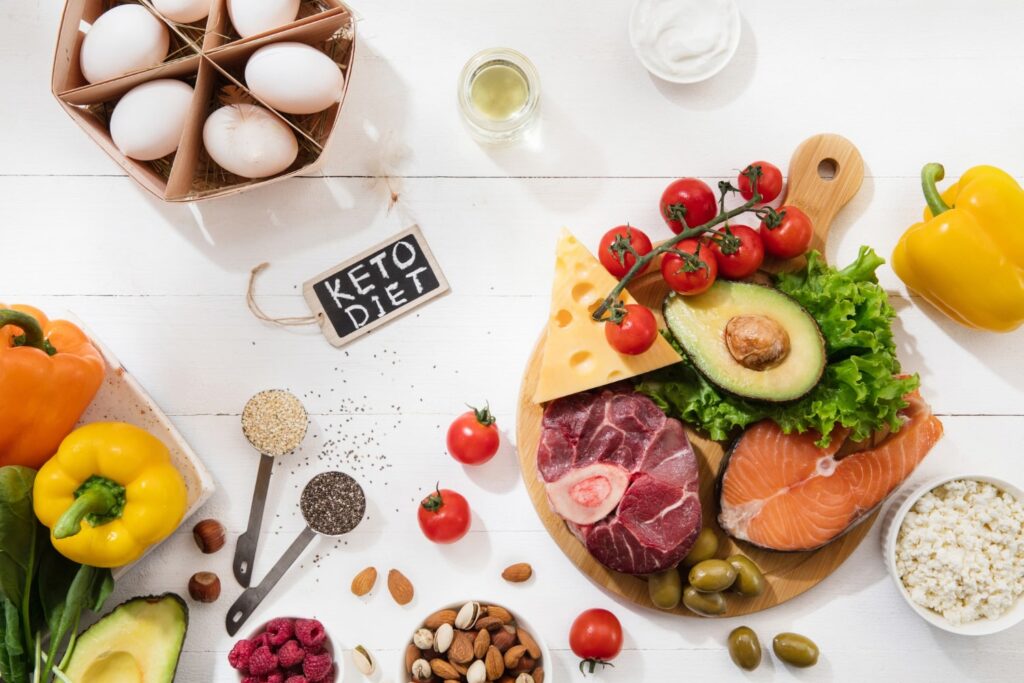Introduction
Ketosis is a metabolic state where your body uses ketones instead of glucose (blood sugar) for energy. Many people believe that they are in ketosis when their blood tests show high levels of ketones, but this isn’t always true. Keto diet for weight loss is very famous these days. People who follow ketogenic diet claim that they lost lots of weight within a short period of time. Is it true?
When you eat foods rich in carbohydrates, your body converts them into glucose, which is then stored in the liver and muscles. This means that after a meal, your blood glucose level rises. In order to convert these carbs into energy, your body has to break down fats and proteins too.

When you don’t consume enough calories, your body starts to burn fat stores instead of carbs or protein. This causes the breakdown of fat cells, leading to ketosis. The result is that your body becomes dependent on using ketone bodies for fuel.
What is Ketosis and the Keto Diet for weight loss?
Ketosis occurs when your body produces ketones in higher amounts than normal levels. When you reach ketosis, your blood becomes acidic and your urine turns yellow. Ketosis happens naturally during starvation and fasting. But, it is not recommended to fast for long periods of time since it can lead to dehydration and other negative side effects.
The ketogenic diet is characterised by high fat, moderate protein, and low carbohydrate intake. There are many different forms of the ketogenic diet. In general, they all have three phases: induction, maintenance, and stabilization.
The induction phase is the first two weeks while you adapt to the diet. You’ll eat lots of fats and little carbs. Your body starts burning stored fats instead of glucose (blood sugar) for fuel.
After about two weeks, you enter the maintenance phase where you increase carb intake to 5-10 net grams per day. Most people who try the ketogenic diet go back to their old eating habits after the initial adaptation period. However, if you successfully maintain the diet, you may find yourself craving fewer sweets and having less cravings for fatty foods.
Benefits of Ketosis
Ketosis is a state of low blood sugar and high levels of ketones. It’s the process your body goes through when it’s burning fat for energy rather than carbs.
There are several benefits to being in ketosis including –
- Improved brain function,
- Increased mental clarity,
- Reduced appetite,
- Weight loss
- Reduced inflammation
- Improved cognitive function (especially in older adults).
Ketosis has been shown to improve memory and focus, reduce hunger, and even help control seizures.
How Does the Ketogenic Diet Work?
When you start the ketogenic diet, you drastically cut down on carbohydrates. Instead, you eat a lot of fat and protein.
Fat contains 9 calories compared to 4 calories (both per gram) for protein and carbohydrates. So, you need to consume much less food to get the same amount of calories. To stay in ketosis, you should limit your total carbs to 50 grams or less per day. That means no bread, pasta, rice, potatoes, fruit juices, candy, cake, cookies, crackers, or anything else containing carbs.

What Foods Are Best for the Ketogenic Diet?
There are a lot of different ways to eat when you’re on the ketogenic diet. You can choose from a variety of meats, fish, and vegetables, as well as low-carb fruits. But one thing that’s common in every way of eating ketogenic is that you have to make sure you’re getting enough fat in your diet.
That’s because fat is what fuels your body while carbohydrates fuel your brain. And if you don’t take enough fat into your body it can trigger weight gain.
The following foods are considered healthy on the keto diet for weight loss:
- Poultry, fish, eggs, and meat (including beef)
- Nuts, seeds, and oils like olive oil
- Avocado
- Chia Seeds
- Broccoli
- Berries
- Beans
- Almonds
- Sweet Potato
- Mushrooms
Side Effects of the Ketogenic Diet
The ketogenic diet causes some unpleasant side effects like –
- Brain Fog
- Headaches
- Muscle Cramps
- Nausea
- Constipation
- Diarrhea
- Fatigue
- Stomachache
- Heart Problems
- Seizures
Completely free until the clock hits 0
Grab Your Free 7 Day Keto Plan Now
Conclusion
You don’t need to go into full ketosis, but you should still do moderate exercise. You can even try intermittent fasting. Exercising moderately will make it easier for you to get the nutrients your body needs. You should also start eating more vegetables and fruits.

I think you do better in life when you FEEL GOOD.
For me, leading a healthy lifestyle involves much more than just working out. It involves warming up, stretching, eating a healthy diet, and having the required rest and sleep. I enjoy assisting people in seeing and experiencing what their bodies are capable of with just enough effort. I make it my mission to assist you in leading a happy and balanced lifestyle that will reduce your risks of getting future health problems.
